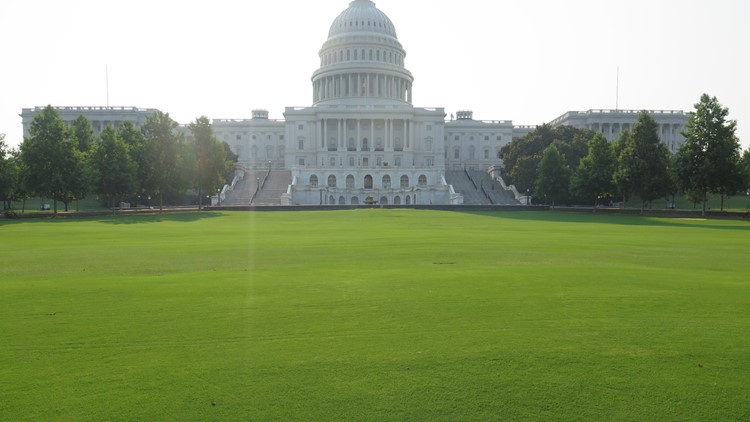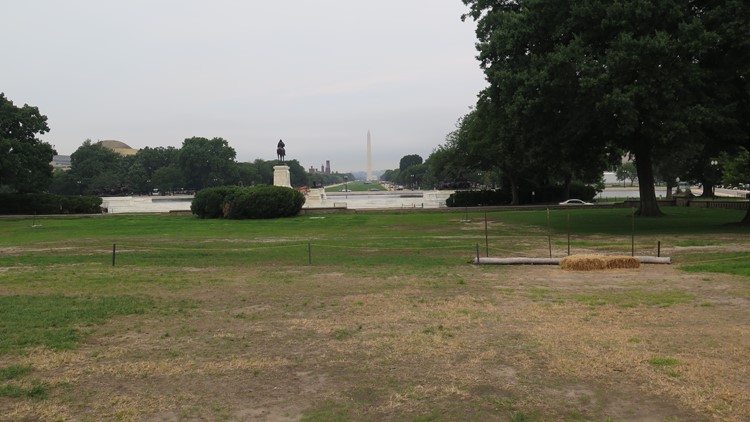The United States Golf Association's grass experts and agronomists recently helped renovate grassy lawns that surround the U.S. Capitol Building -- and the new grass type is a derivative of one that's played on in the D.C. region.
The Oklahoma State University researched and USGA funded Bermuda grass, Tahoma 31, was chosen to re-grass the Capitol Hill lawn around the same time fences came down at the U.S. Capitol Building six months after the Jan. 6 riot, according to USGA officials.
Bermuda grass is commonly used at golf courses in the region because of its low maintenance, and ability to stand up to the hot temperatures in the D.C. area, making it ideal to use.
"So they (Architect of the Capitol) really needed a grass or grasses that could stand up on their own with very little inputs ... very little water, very little nutrients, insecticides, fungicides fertilizers ... so pretty well self-sufficient, once established — doesn't require a lot of maintenance," said USGA agronomist Elliott Dowling.
USGA renovates grass outside US Capitol Building
According to Dowling, the vast grassy areas at the National Mall and U.S. Capitol Building in D.C., have similarities to golf courses, including comparable irrigation and drain line systems. Also, both golf courses and touristy sites in the nation's capital are heavily foot trafficked areas.
The USGA has worked three years with the Architect of the Capitol as the lawns became dilapidated due to the wear and tear from tourists, and concerts held on the lawns.
Dowling added that the lawns of the US Capitol Building were a mixed-match of grass types thrown down through the decades that compounded the aesthetic issues the lawns face. And that having some Bermuda already growing there helped the USGA determine what grass to use.
"It was sparse and bare and needed some work," said USGA agronomist Elliott Dowling. "There was some Bermuda grass that had grown into that area (already). That was just kind of almost a light bulb moment where I looked at that and said, 'Hey, more important, D.C. golf courses in this area use this grass ... It will certainly work here.'"
The Tahoma 31 Bermuda grass is tested by the USGA as part of continuous studies done alongside Oklahoma State University -- a huge agriculture research university that has great resources to test different grasses. The USGA said its yearly budget has money put aside to research and developed grass types that are more sustainable and require fewer chemicals.
Soon, bluegrass will be laid down on top of the Bermuda grass to give the lawns 12 months of color. Bluegrass is a cool-season grass, which will grow to be green in late fall, winter and early spring, Bermuda grass will come out of dormancy and green up and they'll survive together, according to Dowling's explanation.
The USGA has its footprint on D.C. golf courses, too. The association has also worked with the public golf courses run by the nonprofit National Links Trust with some of the work it has scheduled for future course designs for its three courses.
In the past, the USGA has helped manage the putting green located at the White House.









